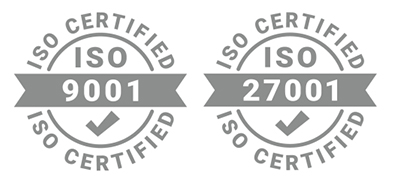At first glance, it may seem strange to think of the components of your IT infrastructure as drivers of business growth. After all, servers, networks, cloud tools, and other backend technologies don’t generate revenue on their own. However, your operations drive your revenue, and as a modern business, your IT drives your operations.
So, if your IT infrastructure is managed well with the right IT support, your business technology experiences peak efficiency. This blog article will examine the role of reliable IT infrastructure management in driving your business efficiency and growth.
Understanding IT Infrastructure Management: A Key to Business Success
Your IT infrastructure is the backbone of your operations. It covers your whole network and all of your hardware, operating systems, and other tools. IT infrastructure management, or IT systems management, refers to how these components are integrated and maintained. If your IT infrastructure isn’t managed properly, you will suffer from poor productivity, efficiency, and security.
How IT Infrastructure Optimisation Drives Business Efficiency
An optimised IT infrastructure enhances business efficiency by accelerating your processes and enabling your workforce to do more in shorter periods of time. A well-managed infrastructure also prevents IT downtime, which drains your productivity and revenue by the minute.
Once your business’s technology network is optimised, you’ll also enjoy cost savings thanks to better resource management. A trained set of eyes can see where your infrastructure is wasteful and which components are redundant, underused, or underperforming so that they can be eliminated from your systems and your budget.
IT Infrastructure Solutions: Tailored Strategies for Business Growth
Here are some IT infrastructure solutions that will help you drive sustainable business growth through IT.
- Cloud computing:
An off-site cloud-powered infrastructure opens the door for game-changing capabilities, enhanced security, and improved agility, all while lowering costs.
- Virtualised IT environments:
If you require on-site IT infrastructure, virtualisation can help you optimise the use of your resources, such as server space. You can also enjoy increased flexibility by housing multiple virtual servers on single pieces of hardware.
- Integrated data backup and storage:
By making data storage and backup a key part of your infrastructure instead of an afterthought, you can massively increase data security and more effectively manage growing data volumes.
Centralised IT infrastructure management solutions make it easy for your IT support provider to access and optimise all components of your network. This further reduces downtime and improves efficiency.
Effective IT Infrastructure Planning: A Blueprint for Long-Term Business Growth
Planning out your IT infrastructure is critical for ensuring your business’s technological foundation is able to support your current needs and future growth. A well-thought-out plan will enable you to align your IT infrastructure with your company’s operational goals, which, in turn, will drive efficiency, scalability, and success.
Below is a step-by-step outline of the IT infrastructure planning process and its role in achieving sustainable business outcomes.
- Conduct an in-depth IT assessment to ensure that your IT decisions are based on data and a clear understanding of your current resources. Identify hardware, software, and network resources currently in use. Also, assess system performance to uncover bottlenecks and inefficiencies.
- Perform a gap analysis to find out what your current setup needs in terms of upgrades and new capabilities to ensure you can reach your business goals.
- Develop an IT strategy.Instead of blindly running out and buying everything you think you need, set a plan to research the ideal solutions and incrementally improve your IT infrastructure. A detailed IT strategy laying out which solutions meet your needs best and a measured approach to implementation will prevent overspending and enable you to pivot as your requirements change.
- With knowledge of what you need, how to get it, and how to implement it, you can now design an infrastructure around your business goals. You may wish to bring on knowledgeable consultants to assist with this process if you haven’t already. Having an optimal design from the start will save more time and money over the long run, so extra expenses on consulting services can end up paying for themselves and more.
- After your design and strategy are set, you can begin the process of building your improved IT infrastructure. Remember to implement components incrementally, and perform testing to ensure the desired effects are being achieved. Don’t be afraid to alter your plan in the face of new data or complications; flexibility is key for growth and success.
The Importance of Ongoing IT Systems Management for Sustainable Success
An optimal IT infrastructure that promotes business growth is not a destination but rather a journey. Ongoing IT systems management and maintenance ensures your technology setup is always providing the maximum possible efficiency and productivity benefits for your organisation.
Whether it’s performed by internal IT employees or outsourced IT infrastructure management, regular maintenance and audits are key to spotting and fixing issues before they turn into major problems. Taking a proactive approach means better cost control, quicker responses to new needs and challenges, and reduced risk of downtime.
Partner with Techware for Reliable Professional IT Infrastructure Management
For a free consultation on how expert IT infrastructure management can drive your business growth sustainably, contact Techware. Our experienced consultants will provide a personalised plan for an infrastructure that is optimised to your current needs and future goals. By benefiting from our expertise and knowledge today and building a strong IT foundation for your business, you can ensure sustainable growth for many years to come.


Leave a comment!